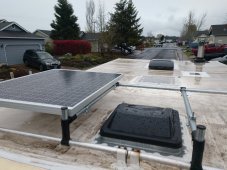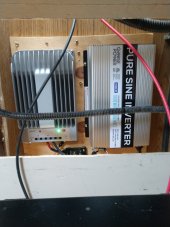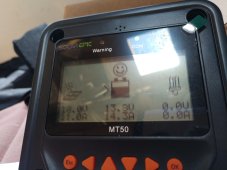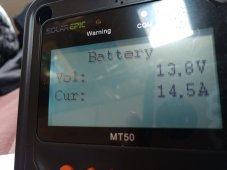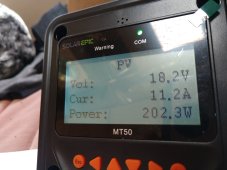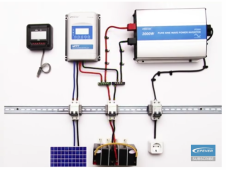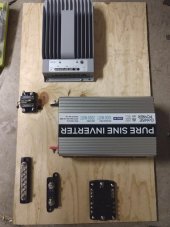Gabrielle
New Member
- Joined
- Apr 11, 2022
- Messages
- 76
I've just completed the solar setup in my 1987 Toyota mini motorhome. It will primarily run my fridge (freezer converted to fridge- roughly 1/2 kwh per day, I believe), maxair fan and charge my laptop.
Im starting with 2 100 watt panels and a 100 amp hour lithium sok battery. I went for a 40 amp charge controller so I can size up to 400 watt system in the future. For my needs, I went with a 1000 watt inverter.
Been watching Will's videos and reading his book, studying diligently over the past many moons as I remodeled the RV interior. I was extremely pleased to see the green lights come on yesterday as I finally got everything hooked up and turned on. The fridge humm was a welcome sound.
I'm fairly confident in the work I did, but I'd love some feedback too. If anyone has any comments or ideas about this system please let me know! I can provide more details if need be. Thanks in advance!
(The photos show one panel up on the roof, the set up before mounting and connecting to the battery, and the mounted setup just before connecting panels.)
Im starting with 2 100 watt panels and a 100 amp hour lithium sok battery. I went for a 40 amp charge controller so I can size up to 400 watt system in the future. For my needs, I went with a 1000 watt inverter.
Been watching Will's videos and reading his book, studying diligently over the past many moons as I remodeled the RV interior. I was extremely pleased to see the green lights come on yesterday as I finally got everything hooked up and turned on. The fridge humm was a welcome sound.
I'm fairly confident in the work I did, but I'd love some feedback too. If anyone has any comments or ideas about this system please let me know! I can provide more details if need be. Thanks in advance!
(The photos show one panel up on the roof, the set up before mounting and connecting to the battery, and the mounted setup just before connecting panels.)



